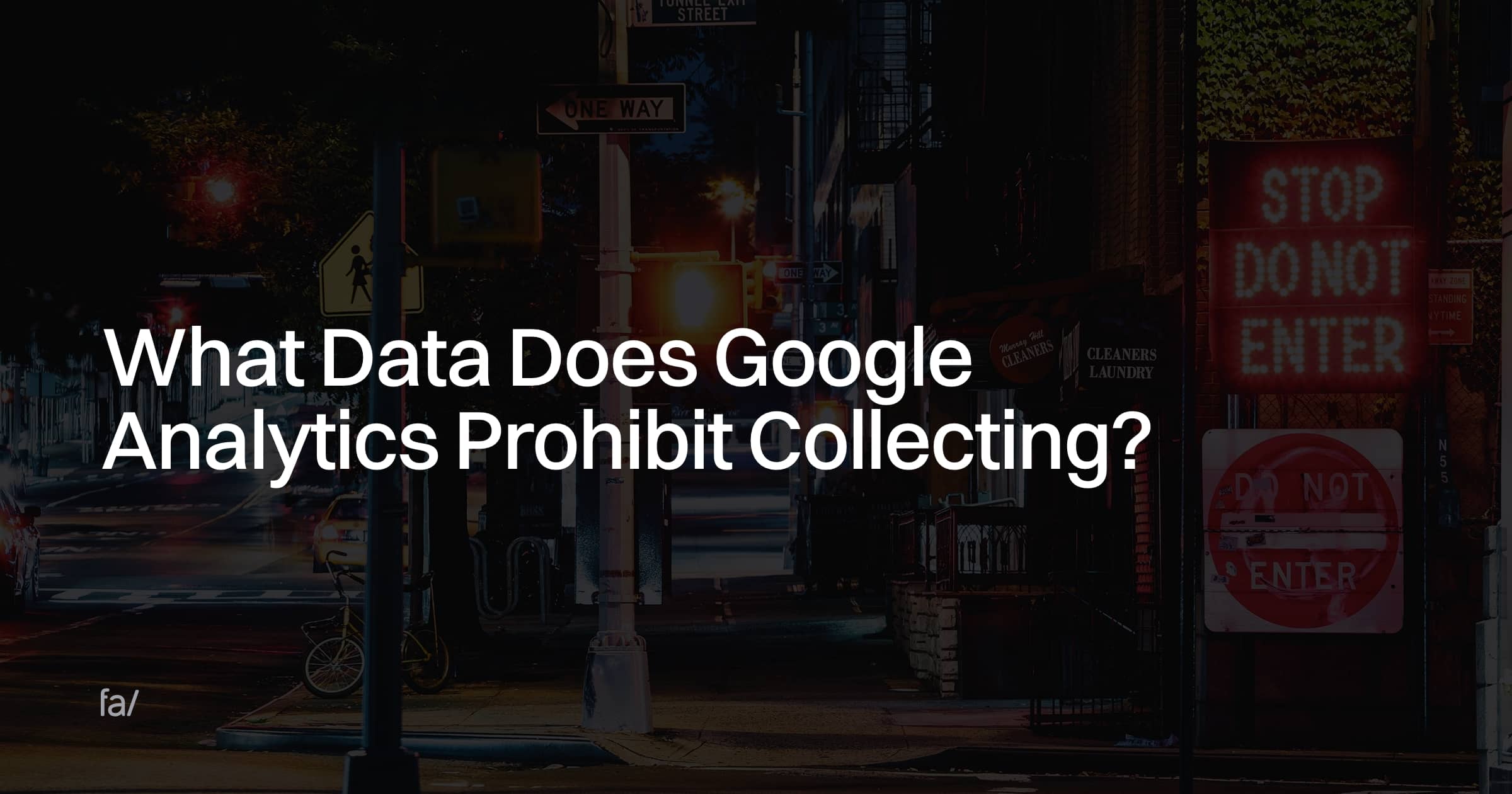Comprehensive Guide: What Data Does Google Analytics Prohibit Collecting?
Comprehensive Guide: What Data Does Google Analytics Prohibit Collecting?
Blog Article
Understanding the Art of Conquering Data Collection Limitations in Google Analytics for Better Decision-Making
In the realm of digital analytics, the ability to remove purposeful insights from data is critical for informed decision-making. Google Analytics stands as a powerful tool for services seeking to understand user behavior, track conversions, and enhance their online existence. However, data collection limitations within this platform can prevent the precision and deepness of the details collected. To absolutely harness the potential of Google Analytics for critical decision-making, understanding the art of getting over these restrictions is necessary. By utilizing calculated approaches and advanced strategies, organizations can elevate their information high quality, unlock concealed understandings, and lead the way for more efficient and enlightened choices.
Information High Quality Evaluation
Data high quality analysis includes evaluating different aspects such as accuracy, efficiency, consistency, and timeliness of the information. One essential facet to take into consideration is data precision, which refers to exactly how well the information shows the real values of the metrics being measured.
Completeness of data is another vital variable in analyzing information quality. Uniformity checks are also important in data high quality evaluation to determine any inconsistencies or anomalies within the data set. By prioritizing data quality analysis in Google Analytics, businesses can enhance the integrity of their analytics records and make even more enlightened choices based on accurate insights.
Advanced Monitoring Methods
Using sophisticated tracking techniques in Google Analytics can significantly enhance the deepness and granularity of information gathered for more extensive analysis and understandings. One such method is event monitoring, which permits the tracking of certain interactions on an internet site, like click buttons, downloads of files, or video clip sights. By executing occasion tracking, businesses can gain a much deeper understanding of individual behavior and involvement with their on the internet web content.
In addition, customized dimensions and metrics give a method to tailor Google Analytics to details company requirements. Custom measurements permit the production of brand-new data factors, such as user duties or client sectors, while custom-made metrics enable the monitoring of unique efficiency indicators, like earnings per individual or ordinary order value.
Moreover, the usage of Google Tag Supervisor can improve the execution of tracking codes and tags throughout a website, making it much easier to manage and release advanced tracking arrangements. By utilizing these innovative tracking methods, companies can unlock valuable understandings and optimize their on the internet strategies for much better decision-making.
Personalized Dimension Execution
To improve the deepness of information collected in Google Analytics beyond sophisticated monitoring techniques like occasion monitoring, businesses can execute custom-made measurements for more tailored understandings. Custom dimensions enable services to define and accumulate certain information factors that relate to their distinct goals and goals (What Data Does Google Analytics Prohibit Collecting?). By appointing custom dimensions to different aspects on a web site, such as individual communications, demographics, or session details, services can obtain a more granular understanding of how users engage with their online residential or commercial properties

Attribution Modeling Strategies
By using the ideal attribution design, businesses can properly attribute conversions to the ideal touchpoints along the client trip. One typical acknowledgment model is the Last Communication design, which offers credit rating for a conversion to the last touchpoint a customer engaged with prior to converting.

Information Experiencing Avoidance
When taking care of huge quantities of information in Google Analytics, overcoming data sampling is vital to guarantee precise insights are obtained for educated decision-making. Information sampling occurs when Google Analytics link estimates patterns in data instead of assessing the full dataset, possibly leading to skewed results. To prevent information tasting, one reliable approach is to lower the day array being analyzed. By focusing on much shorter timespan, the chance of running into sampled data decreases, providing a more precise depiction of customer actions. In addition, using Google Analytics 360, the premium variation of the system, can aid alleviate tasting as it permits higher data limits before sampling starts. Implementing filters to limit the information being evaluated can also aid in avoiding tasting issues. By taking these aggressive actions to lessen data tasting, organizations can draw out much more accurate understandings from Google Analytics, causing much better decision-making and enhanced have a peek at these guys overall performance.
Final Thought
Finally, grasping the art of overcoming information collection constraints in Google Analytics is important for making notified decisions. By carrying out a comprehensive information quality evaluation, applying sophisticated monitoring techniques, using personalized dimensions, utilizing acknowledgment modeling strategies, and preventing information tasting, companies can make sure that they have exact and dependable data to base their decisions on. This will inevitably cause extra efficient approaches and better outcomes for the organization.

Report this page